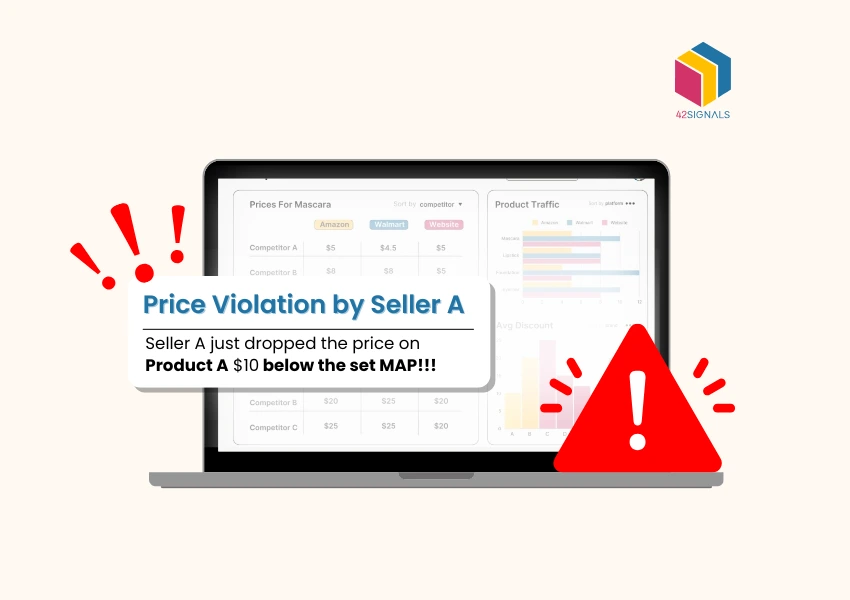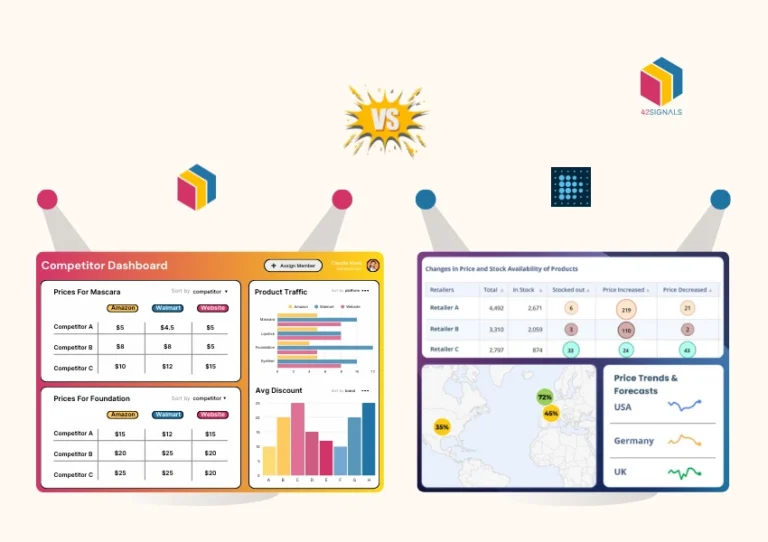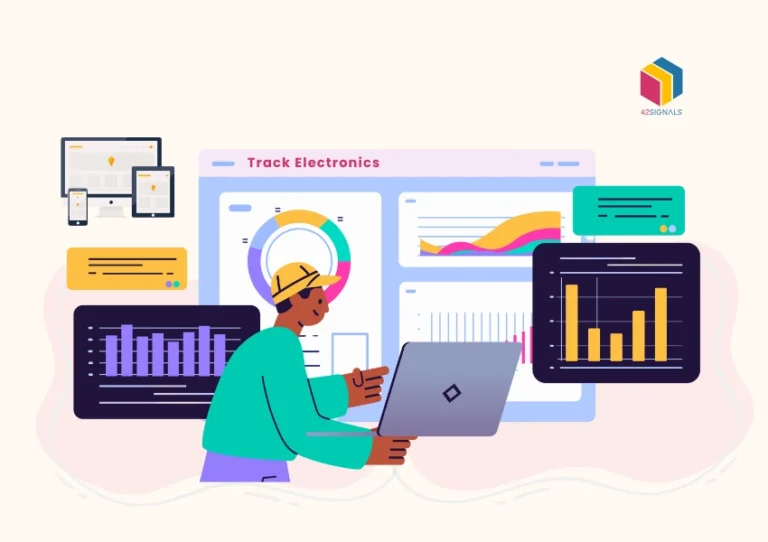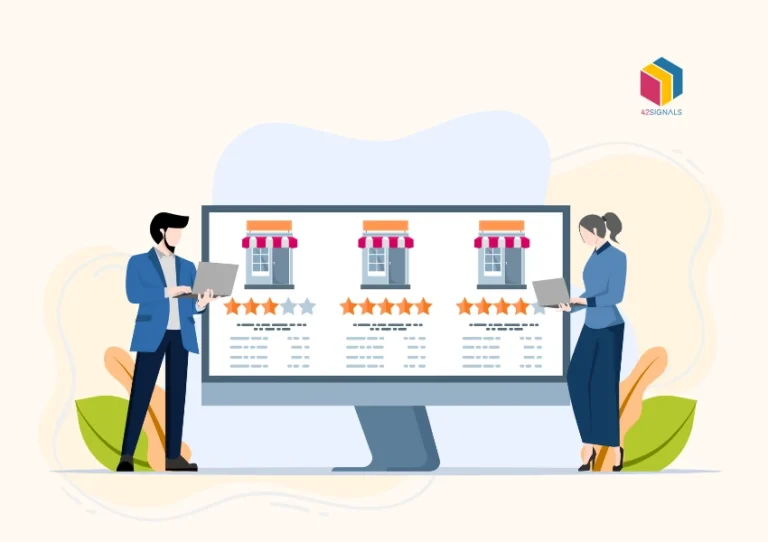Table of Contents
Toggle** TL;DR ** A MAP enforcement service is an essential solution for brands to automatically and continuously monitor the internet for minimum advertised price (MAP) violations, which manually is an impossible, time-consuming task. This service protects your brand’s value and retailer relationships by providing real-time alerts, court-ready evidence, and often sending first-strike warnings, preventing the profit erosion and brand damage caused by unauthorized sellers sparking a race to the bottom. Ultimately, it transforms enforcement from a reactive burden into a proactive strategy for maintaining healthy margins and building unshakeable retail partnerships.
If you’re a successful brand selling online, chances are you’ve seen copycats, unauthorized sellers or worse, your own sellers violate your minimum advertised price. It can be cumbersome and nearly impossible to track all of these fluctuations manually, and that’s why a MAP enforcement service is needed.
In today’s digital marketplace, protecting your price isn’t a separate task—it’s synonymous with protecting your brand. It is the fundamental work of ensuring that the value you create is recognized and respected.
If you’re one of these brands, this guide is for you.
What a MAP Enforcement Service Means for Your Brand
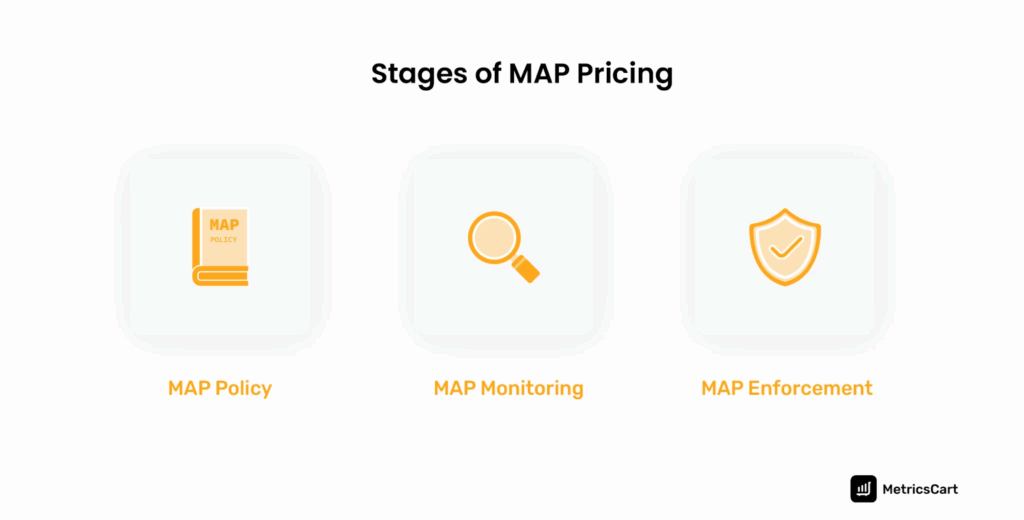
Image Source: Metrics Cart
Minimum advertised price in simple terms is the absolute lowest number any retailer is allowed to publicly display next to your product. This is not just about the price on the product, but includes coupons, final checkout discounts, and everything in between.

Why does this single number matter so much? Because price is the loudest signal you send about your product’s value.
Think about it from the customer’s perspective. They’re doing their research. They see your beautiful product for $100 on your own website. They see it for a respectable $75 at a trusted, authorized retailer they know and trust. Then, they see it for $55 on “Discounts-R-Us,” a site they’ve never heard of, with contact information listed in a foreign country and no customer service number.
And let’s talk about your retailers—the real ones. The partners who have actual staff, who provide service, who hold inventory. They’re investing in you. When a fly-by-night operation with zero overhead undercuts them, you’re not just losing a single sale; you’re spitting on that investment. You’re telling your partner that their efforts, their shelf space, and their sales training are worthless. I’ve had retailers call me, their voices a mix of anger and betrayal, asking, “Why should I keep your product on the shelf, train my staff on it, and feature it in my newsletter if you won’t protect my margin?
A MAP policy isn’t about being controlling. It’s about being fair. It ensures competition happens where it should: on service, on customer experience, on the quality of the buying journey—not a mindless race to the bottom that benefits no one.
Download the 42Signals MAP Violation Detection Guide
How One MAP Violation Can Wreck Everything

One seller lists your product cheap. You’re busy, so you note it down to handle “later.” But your authorized retailers see it *now*. One of them, scared of losing a customer, panics and matches the price.
Just like that, with one MAP violation, their entire profit margin on your product instantly evaporates. They’re now selling your product at cost, or even at a loss, just to avoid looking overpriced. Another retailer, seeing the price drop from a competitor they respect, follows suit. They assume there’s a promo they missed out on. Within a week, what started as a single rogue listing has infected your entire pricing architecture, sending it into a downward spiral. The race to the bottom has officially begun, and you’re losing.
Then, the emails start. It’s your top partner. They’re not asking; they’re demanding to know what you’re going to do about it. The relationship, once built on mutual success, is now strained and transactional.
And what about your customers in all of this? They become the ultimate losers. The customer who buys from the unauthorized seller for $55 often gets a terrible experience. The product might be old stock, a refurbished item sold as new, or even counterfeit. There is certainly no customer support, no ability to process a warranty claim, and no knowledge about the product. But when the product breaks or doesn’t meet expectations, who do they blame? The name on the box. Yours.
You are left wearing the negative review, the chargeback, and the damaged reputation for a sale you never made, never wanted, and didn’t profit from. According to a report by the Global Brand Counterfeiting Report, online infringement and unauthorized sales cost businesses over $300 billion annually, a figure that doesn’t even include the long-term brand equity damage. You suffer the consequences for a predator’s actions.
The cost is never just the lost revenue from that one single sale. It’s a death by a thousand cuts: eroded margins, broken trust with your most valuable partners, a customer service nightmare, and a brand that starts to look common, cheap, and out of control.
Ready to Take the Next Step?
See how our solutions can help you achieve your goals and drive measurable results.
The Issues With Manual Enforcement of MAP
When sellers violate your minimum advertised price, you need to take action and an MAP enforcement service.

The problem is real and it’s hurting you. The default reaction for most small to mid-sized brands is to try and handle it in-house. You assign it to an intern, to a junior marketing associate, or more often than not, to yourself at 10 PM after the rest of the work is done. You open twenty browser tabs and begin the depressing, digital scavenger hunt: Google shopping, Amazon, eBay, Walmart Marketplace, Wish, Sears Marketplace, Newegg… and you hit refresh, over and over and over again.
I can say this with absolute certainty because I’ve lived it: This. Doesn’t. Work. It is a guaranteed path to failure and burnout. Here’s why the manual approach is a complete fool’s errand:
- The Internet is Infinite and Relentless: For every unauthorized seller you find and manage to shut down, three more will pop up in its place. You are manually trying to monitor the entire digital universe, a task that is simply impossible for a human being. It’s like playing whack-a-mole blindfolded while the moles are multiplying exponentially. The scale is just too vast.
- It’s a Soul-Crushing Time Sink: The hours you spend playing price detective are hours stolen from actual, high-value work. This is the massive opportunity cost that often goes uncalculated. That’s an hour not spent on product development, not spent on a killer marketing campaign, not spent on strategic partnerships, not spent on sales calls. You are trading your most valuable, strategic time for a tedious, low-level administrative task that you are ill-equipped to win. The financial cost of your own diverted time is often greater than the cost of the solution.
- You’re Always, Always Behind: A violation can be posted and can do significant damage in the hours between your manual checks. You are fundamentally reactive. You are only ever responding to problems that have already happened and have already started causing damage. By the time you find it, the customer who bought from the unauthorized seller is already having a bad experience, and your retailers are already furious. There is no proactive defense in a manual system.
Trying to handle and enforce MAP pricing yourself is like trying to stop a leaky boat with bandaids. You might plug one hole, but another three are already springing up.
The New: How MAP Enforcement Service Works
- The 24/7 Scout: Advanced software crawls the entire web—every marketplace, every niche site, every digital corner. It finds every single seller listing your products, especially the ones you’d never find. It builds a complete, living map of your product’s entire online presence.
- The Instant Siren Alert: The second a listed price anywhere on that map dips below your pre-set MAP threshold, an immediate, detailed alert hits your inbox or dashboard. There is no daily digest. No delay. This instant notification is the core benefit of automated violation reports
- The Evidence File: A good service doesn’t just alert you with a text message saying “price low.” It builds an undeniable legal case for you, automatically. It doesn’t just alert you. It builds the case. Automatic, time-stamped screenshots give you undeniable, court-ready proof.
- The First Strike: Many services will automatically send the first warning notice for you. It immediately shows violators you’re not messing around and that you have a system. This alone stops a huge percentage of problems.
Download the 42Signals MAP Violation Detection Guide
Choosing Your Weapon: What to Really Look For in a Partner
Not all map enforcement services are created equal. Some are bare-bones monitors that simply provide data. Others are true partners in brand protection. When you’re vetting a potential partner, don’t just look at the monthly price. Dig deeper and look for these core capabilities that separate the amateurs from the professionals:
Total Coverage, No Blind Spots: This is the most important question to ask: Can their technology actually find the stuff on the dark corners of the web, or do they just monitor the easy-to-scrape Amazon and eBay listings? Deep, comprehensive monitoring is non-negotiable. If they can’t find the violators on obscure marketplaces, foreign sites, and standalone e-commerce stores, they’re only solving half the problem.
Real-Time Speed: You need price alerts that feel like a text message, not a weekly report. The faster you know, the less damage is done.
Ironclad Evidence: The system must automatically gather forensic-level proof. Screenshots are the bare minimum.
Network Intelligence and Segmentation: Can the tool help you intelligently separate your true, authorized partners from the unauthorized sellers? This intelligence is power. It allows you to handle violations with nuance—perhaps a friendly warning to an authorized partner who made a mistake versus a firm, immediate demand to an unknown, predatory seller.
Clear, Actionable Intelligence, Not Just Data: You need a dashboard that shows you more than just a long list of problems. You need to see trends. Who are your repeat offenders? Which products are most targeted? Is there a specific marketplace that is a constant source of trouble? This high-level intelligence helps you understand the “why” behind the violations and address root causes, like a distribution leak.
You’re not just buying a software subscription; you’re hiring a specialized, outsourced team and giving them the technology to act on your behalf.
The Benefits of Using a MAP Enforcement Service

Getting a handle on this does more than just fix prices. It transforms your business.
Margin Protection and Profit Recovery: This is the obvious, immediate win. By stopping price erosion, you protect the profit margin for yourself and for your retailers. This makes your products more desirable and financially viable for retailers to carry and promote. Healthy margins are the lifeblood of any business, and enforcement directly protects that.
Unshakeable Retailer Loyalty and Partnership: This might be the most powerful long-term benefit. When you actively, consistently, and effectively defend your retailers’ margins, you create fierce, loyal allies. You move from being just a supplier to being a true partner.
Incredible Market Intelligence: The data generated by a comprehensive monitoring service is an unexpected goldmine. You suddenly have a crystal-clear view of your entire online distribution network. You can discover leaks in your supply chain—identifying which distributors are selling to unauthorized sellers. You can identify your most problematic repeat offenders and prioritize legal action against them. You gain insights into the competitive landscape and your market positioning that were previously invisible.
This shift is profound. It transforms MAP enforcement from a defensive, reactionary cost center into your most powerful offensive strategy for growth, stability, and building unbreakable partner relationships.
Ready to Take the Next Step?
See how our solutions can help you achieve your goals and drive measurable results.
Why We Built 42Signals to Do This One Thing Right
We built our map enforcement service because we were tired of seeing brilliant, passionate creators and business owners get beaten down by a problem that has a clear, technical solution. We were tired of the 10 PM manual search parties through Google. We were tired of the angry, difficult phone calls from valuable partners feeling abandoned. We believed that brand builders should be able to focus on building, not policing.
We’re not a faceless tech company. We’re builders who made a powerful tool for builders. Our platform wasn’t designed in a vacuum based on hypotheticals; it was engineered from the ground up to solve the specific, gritty, real-world problems we and our clients faced every day.
It’s designed to give you the upper hand through overwhelming clarity and organized action. We give you the bulletproof evidence and the streamlined processes to not just identify problems, but to end them decisively. We help you build a fortified authorized seller network where good actors are rewarded and bad actors are efficiently removed from the equation. Our goal is to make the process so seamless and effective that pricing violations stop being a daily crisis and start becoming a rare, easily managed anomaly.
The Choice is Yours: Build or Bleed
Let’s be real. In the face of MAP violations, ignoring the problem is a conscious choice. It’s a decision to be passive, to let others define your brand’s value, to allow your hard-earned brand equity to be diluted day by day. It’s a choice to bleed.
Choosing to enforce, on the other hand, is an active choice to fight for what you built. The tools exist. The path is clear. The only question that remains is which choice you will make.
Ready to stop getting robbed and start building a fortress around your brand’s value? Let’s have a real conversation. See exactly how 42Signals works in a personalized demo and learn how we can become your quiet, relentless, and highly effective partner in protection.
Download the 42Signals MAP Violation Detection Guide
Frequently Asked Questions
In a military context, MAP typically refers to the Meritorious Advancement Program (used in the U.S. Navy). This program allows commanding officers to promote enlisted personnel ahead of schedule based on performance, leadership, and overall contribution—without having to wait for the standard advancement exam cycle. It’s designed to recognize exceptional sailors and reward talent with faster career progression.
In retail, MAP stands for Minimum Advertised Price. It’s the lowest price a manufacturer allows retailers to publicly advertise a product for. While the product can technically be sold for a lower price, retailers cannot display or promote it below the MAP in ads, websites, or printed materials. MAP policies are used to protect brand value, ensure fair competition, and prevent price wars among sellers.
MRP (Maximum Retail Price) is the highest price a product can be legally sold to a consumer in countries like India. It is printed on the product packaging and includes all applicable taxes.
MAP (Minimum Advertised Price) is the lowest price a retailer is allowed to advertise for a product, based on a manufacturer’s policy. It doesn’t limit the final selling price, just the public-facing promotional price.
In short:
MRP = price ceiling (legal maximum
MAP = price floor for advertising (not final sale price)
A service MAP refers to a visual or strategic layout of how a service is delivered to customers. It’s often called a service blueprint or service journey map and outlines key interactions, support processes, customer touchpoints, and backend operations. Businesses use service maps to understand and improve the customer experience, optimize workflows, and identify areas of service friction or inefficiency.
For example, in hospitality or tech support, a service MAP can show the step-by-step journey from customer inquiry to problem resolution, including what teams are involved and what tools are used.
